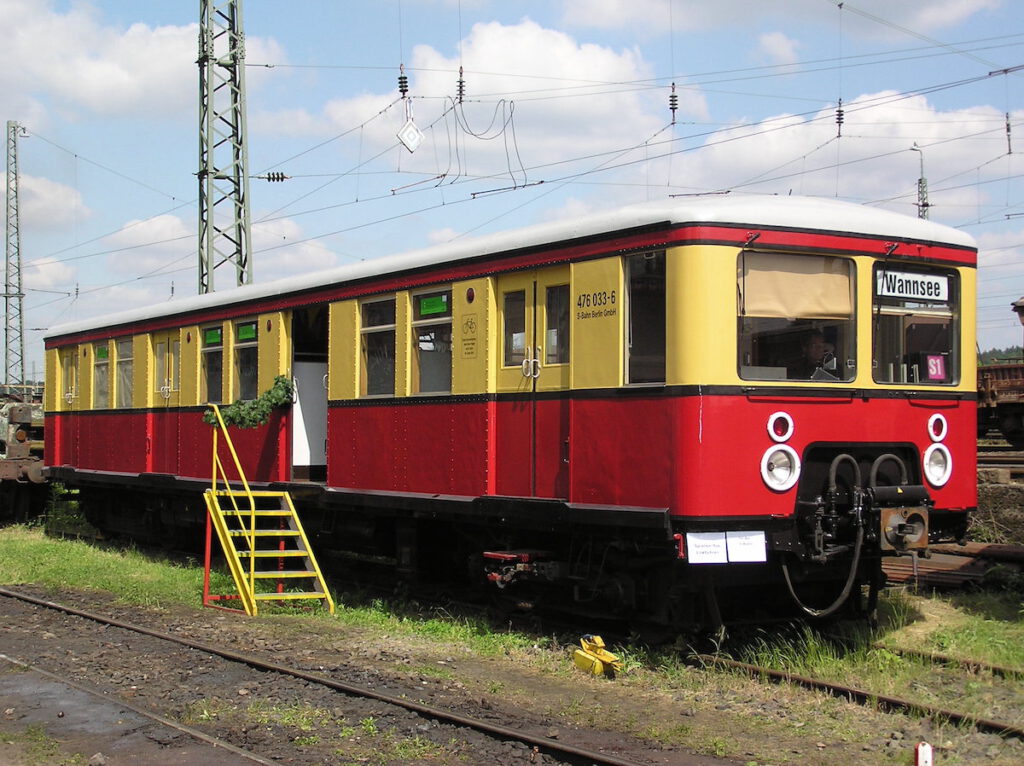On 6 November 2023, the former Berlin S-Bahn railcar 476 033 left the railway museum due to lack of space and found a new home in Dresden.
Gerhard Vocke, a long-standing member of the Museumsbahn e. V. association, took this event as an opportunity to look at the development of local railway transport in Berlin during a lecture evening in August this year.
As early as the middle of the 19th century, Berlin could be reached by railway from all directions via terminus stations. However, there was no connection between them, which was created with the Ringbahn railway built between 1871 and 1877. From 1882 – 1887, the city railway crossing the city from west to east was added. This was mainly built as an elevated railway on bridge arches in order to avoid the numerous level crossings that were otherwise required. In the first decades, steam locomotives pulled the typical compartment car trains.
However, experiments with electrically powered vehicles began as early as 1900. In 1923, it was finally decided to equip local transport with DC traction trains and a side-feed power supply rail, a system that had already proved its worth on the underground railway from 1900. By 1944, over 1200 units consisting of motor coaches, driving trailers and sidecars had been put into operation.
By 1939, a tunnel line crossing the city in a north-south direction had been added to the local transport network, which was now known as the S-Bahn.
After the Second World War, many vehicles were destroyed or badly damaged. However, operations were soon resumed. But after the Wall was built on 13 August 1961, the network was divided between the eastern and western sectors. A crossing was only possible at Friedrichstraße station, with meticulous and sometimes harassing controls. It was only after the fall of the Berlin Wall that the lines were gradually reconnected from 1990 onwards.
The S-Bahn railcar 476 033, built in 1928, was in service for 72 years and had been through all the developments before it came to Kranichstein to the railway museum. It is now being added to a collection of other Berlin vehicles and we hope that it will remain there in keeping with its significance.
Lecture evenings on a wide variety of railway-related topics take place every first Wednesday at 8 pm in the Railway Museum (see calendar of events). The spectrum ranges from lectures on history – such as the one described above – to travelogues from railways in distant countries and technical presentations. Admission is free and interested listeners and speakers with exciting topics are always welcome! We ask the latter to submit and agree their topic by e-mail in advance.




